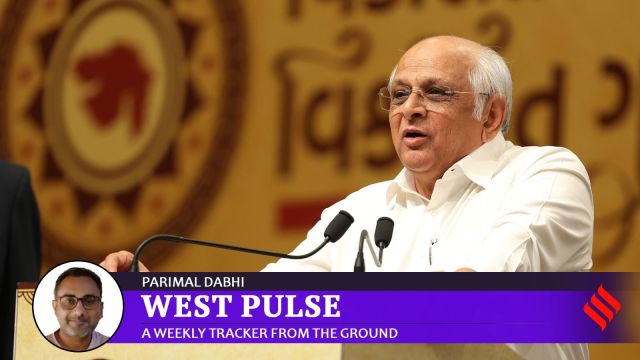The recent creation of Vav-Tharad district carved out of Banaskantha district in Gujarat has triggered protests from various quarters, especially the Opposition Congress, who have maintained that certain local groups were not consulted before the BJP-led state government took this decision.

In the 2017 state Assembly polls, the Congress had won six of the undivided Banaskantha district’s nine seats. Even in its worst-ever showing in Gujarat in the 2022 Assembly elections, when the Congress could manage to get only 17 seats, four of these came from Banaskantha alone. In the recent bypolls though, the Congress lost one of these seats to the BJP.
In the 2024 Lok Sabha polls, the Congress could win just one of 26 seats – Banaskantha – with the BJP bagging the remaining 25. The Banaskantha parliamentary seat is represented by the Congress’s Geniben Thakor.
On its part, the BJP government said the decision to bifurcate Banaskantha was taken in the interest of the “larger public”. Announcing the decision taken by the Cabinet on January 1, Gujarat minister Rushikesh Patel said, “In terms of area, Banaskantha is the second-largest district… In terms of population, it is the largest with the maximum of 14 talukas. If people had to travel from the interiors, they would have to travel 35-85 km. This will now be shortened. To ensure that the administration is at ease and that people do not face problems of transportation, Banaskantha has been divided into two districts.”
Besides, the Gujarat government has also announced the formation of nine newly-formed municipal corporations: Morbi, Surendranagar and Porbandar in Saurashtra; Anand and Nadiad in Central Gujarat; Gandhidham in Kutch; Mehsana in north Gujarat; and Vapi and Navsari in South Gujarat.
Of the undivided Banaskantha district’s 14 talukas, eight talukas (Vav, Bhabhar, Tharad, Dhanera, Suigam, Lakhni, Deodar and Kankrej) will now form the Vav-Tharad district, while the remaining six (Palanpur, Danta, Amirgadh, Dantiwada, Vadgam and Deesa) will remain part of Banaskantha.
Story continues below this ad
The district’s bifurcation is being opposed by various groups mainly from three talukas —- Dhanera, Kankrej and Deodar — that have been carved from Banaskantha to be part of Vav-Tharad. The protesters are demanding that they should be allowed to stay with Banaskantha and not be attached to the new district. They have held that most of their works have been linked to Banaskantha district and its headquarters Palanpur and that the government did not consult them before splitting it.
Former Congress MLA of Dhanera, Nathabhai Patel, who is one of the key faces of the protests, said, “We do not mind the splitting of Banaskantha as it was a large district. But we oppose inclusion of Dhanera in the new district of Vav-Tharad. Most of our social and educational dealings are with Palanpur, which is closer to Dhanera as compared to Tharad. So, we want to stay in Banaskantha and not in Vav-Tharad. The government did not consult us before announcing this decision.”
He also said, “We have already given a memorandum opposing the decision and have also given a call for Dhanera bandh on Saturday.”
A section of local residents of Kankrej taluka have even demanded that the state government reassign the taluka to Patan district, if it is not returned to Banaskantha. This demand has especially been raised by the residents of Thara and Shihori, two major villages of Kankrej taluka, which fall within a radius of about 30 kms from Patan district.
Story continues below this ad
MP Geniben Thakor told The Indian Express that the local political leadership had not been consulted before the division of Banaskantha district. “Since Vav-Tharad will be along the Indo-Pak border, it is bound to be neglected by the state government,” she said.
A senior BJP leader said on condition of anonymity that the decisions of the government to bifurcate Banaskantha district and forming nine new municipal corporations could be seen as an attempt to make the development “visible” under CM Patel.
“Dividing Banaskantha district helps the people directly. Smaller districts help people. It decreases their transport time and expenses in accessing the district collector’s office, courts and police station. The administration can give more attention to people’s issues in a smaller district. This is a pro-people move, but it will also give our party a strong marketing or selling point to garner votes in elections,” the BJP leader added.
With the reorganisation of the district, the elections to the Banaskantha district panchayat, 14 taluka panchayats and various village panchayats have been delayed by at least six months. These local body polls were due in February 2023. So far, it was delayed owing to issues related to fixing OBC quota in local bodies following recommendations by a dedicated Commission as ordered by the Supreme Court. And now, with the bifurcation of the district, these polls cannot take place till the delimitation and allotment of administrative workforce and offices are done.
(With inputs from Ritu Sharma)

































